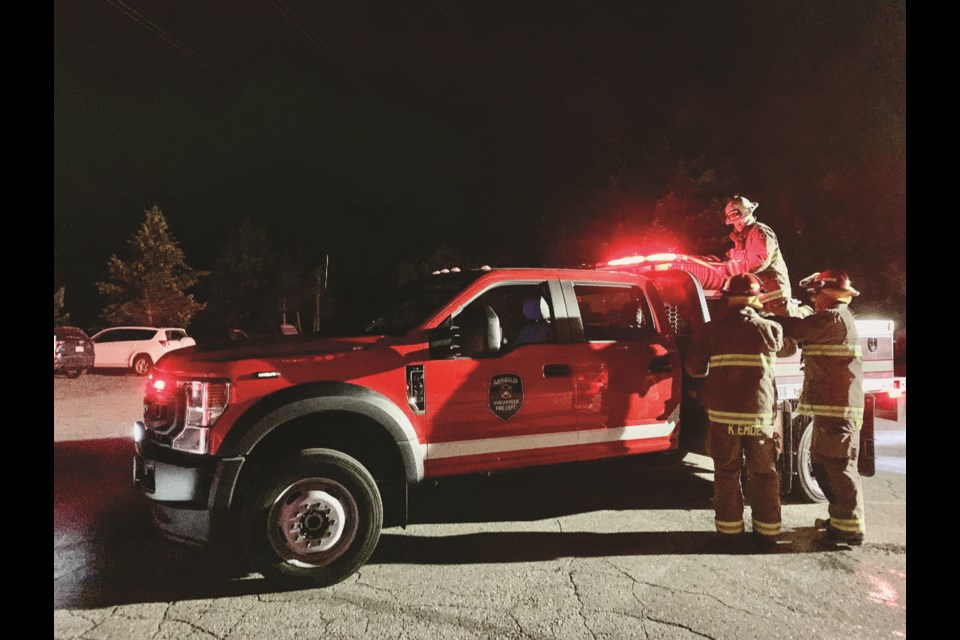The area between Whistler and Squamish is better prepared for future wildfires after acquiring new state-of-the-art equipment.
On Nov. 28, with Squamish-Lillooet Regional District (SLRD) chair Jen Ford in the driver’s seat, the Garibaldi Volunteer Fire Department (GVFD) pushed a brand-new wildland fire truck into its fire hall adjacent to Black Tusk Village, followed by a demonstration of the vehicle in action.
Wildland vehicles are essentially rapid-response fire trucks designed specifically to transport fire personnel, water, pumps, hoses and other equipment to the scene.
Fire Chief Dan Ross called the wildland truck “a game-changer” for the department, allowing fire personnel to respond quickly and safely to incidents—particularly in the backcountry, where call-outs have increased in both frequency and complexity.
“We started to realize there are more people taking into the backcountry and more calls that are more remote, along service roads. We needed a different vehicle to better suit our needs,” Ross said at Monday’s ceremony.
“As the wildfire risk grows, it’s no secret it grows here in the Sea to Sky for us, so what we’re doing is adding a new tool to our toolbox.”
The wildland truck replaces a 17-year-old pickup truck, and is designed to drive through rough terrain.
Along with the new fire truck, two new drones have been purchased that will be used for scene assessments and lookouts to enable quicker and more efficient decision-making in real time. The GVFD currently has five trained drone pilots with the applicable licences.
The GVFD has about 20 volunteer firefighters and services the areas of Pinecrest, Black Tusk Village and a 16-kilometre stretch of Highway 99. The department commonly extends its response area along the highway to assist other partner agencies.
After the push-in, a demonstration was held to show off the vehicle’s capabilities. Volunteer firefighters lit a small chimney fire and used the new truck to put it out—with help from Area D director Tony Rainbow, who suited up in bunker gear for the occasion.
The acquisition of the new equipment was made possible through grants provided by the Whistler Blackcomb Foundation, Woodfibre LNG, and the GVFD Society, as well as the SLRD, which provided $100,000 for the purchase of the vehicle.
“You make a commitment to come here and practise and leave prepared to go out on calls. Our responsibility as a board is to make sure that you have what you need to be able to do that job and to be able to do it safely,” Rainbow said.
“I don’t ever want to hear about a firefighter being hurt out on a call because the equipment they had wasn’t satisfactory; that should never happen,” he added. “There is an increased risk of wildfire. We’re not going to see a decrease in the amount, so it’s even more important that we make sure you’re prepared for the work that you volunteer to do.”




